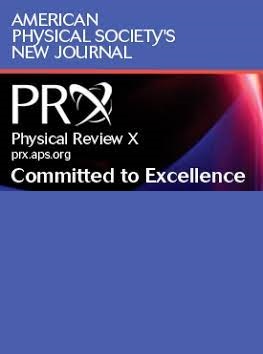Computational Power of Random Quantum Circuits in Arbitrary Geometries
IF 15.7
1区 物理与天体物理
Q1 PHYSICS, MULTIDISCIPLINARY
引用次数: 0
Abstract
Empirical evidence for a gap between the computational powers of classical and quantum computers has been provided by experiments that sample the output distributions of two-dimensional quantum circuits. Many attempts to close this gap have utilized classical simulations based on tensor network techniques, and their limitations shed light on the improvements to quantum hardware required to frustrate classical simulability. In particular, quantum computers having in excess of approximately 50 qubits are primarily vulnerable to classical simulation due to restrictions on their gate fidelity and their connectivity, the latter determining how many gates are required (and, therefore, how much infidelity is suffered) in generating highly entangled states. Here, we describe recent hardware upgrades to Quantinuum’s H2 quantum computer, enabling it to operate on up to 56 qubits with arbitrary connectivity and 99.843(5)% two-qubit gate fidelity. We define a class of circuits with random geometries that become hard to classically simulate in very low depth and implement them utilizing the flexible connectivity of H2. A careful analysis demonstrating the fast saturation of classical simulation complexity with depth indicates that H2 can yield data well beyond the reach of state-of-the art classical simulation methods at unprecedented fidelities. We find that the considerable difficulty of classically simulating H2 is likely limited only by qubit number, demonstrating the promise and scalability of the quantum charge-coupled device architecture as continued progress is made toward building larger machines.任意几何中随机量子电路的计算能力
通过对二维量子电路的输出分布进行采样的实验,提供了经典计算机和量子计算机计算能力之间存在差距的经验证据。许多缩小这一差距的尝试都利用了基于张量网络技术的经典模拟,它们的局限性揭示了对量子硬件的改进需要挫败经典的可模拟性。特别是,拥有超过大约50个量子比特的量子计算机主要容易受到经典模拟的影响,因为它们的门保真度和连接性受到限制,后者决定了在产生高度纠缠状态时需要多少门(因此,遭受了多少不忠)。在这里,我们描述了最近对量子H2量子计算机的硬件升级,使其能够在多达56个量子比特上运行,具有任意连接和99.843(5)%的双量子比特门保真度。我们定义了一类具有随机几何形状的电路,这些电路很难在非常低的深度下进行经典模拟,并利用H2的灵活连接来实现它们。一项仔细的分析表明,经典模拟复杂性随深度的快速饱和表明,H2可以以前所未有的保真度产生远远超出最先进的经典模拟方法所能达到的数据。我们发现经典模拟H2的相当大的困难可能只受量子比特数的限制,这表明随着构建更大机器的持续进展,量子电荷耦合器件架构的前景和可扩展性。2025年由美国物理学会出版
本文章由计算机程序翻译,如有差异,请以英文原文为准。
求助全文
约1分钟内获得全文
求助全文
来源期刊

Physical Review X
PHYSICS, MULTIDISCIPLINARY-
CiteScore
24.60
自引率
1.60%
发文量
197
审稿时长
3 months
期刊介绍:
Physical Review X (PRX) stands as an exclusively online, fully open-access journal, emphasizing innovation, quality, and enduring impact in the scientific content it disseminates. Devoted to showcasing a curated selection of papers from pure, applied, and interdisciplinary physics, PRX aims to feature work with the potential to shape current and future research while leaving a lasting and profound impact in their respective fields. Encompassing the entire spectrum of physics subject areas, PRX places a special focus on groundbreaking interdisciplinary research with broad-reaching influence.
 求助内容:
求助内容: 应助结果提醒方式:
应助结果提醒方式:


